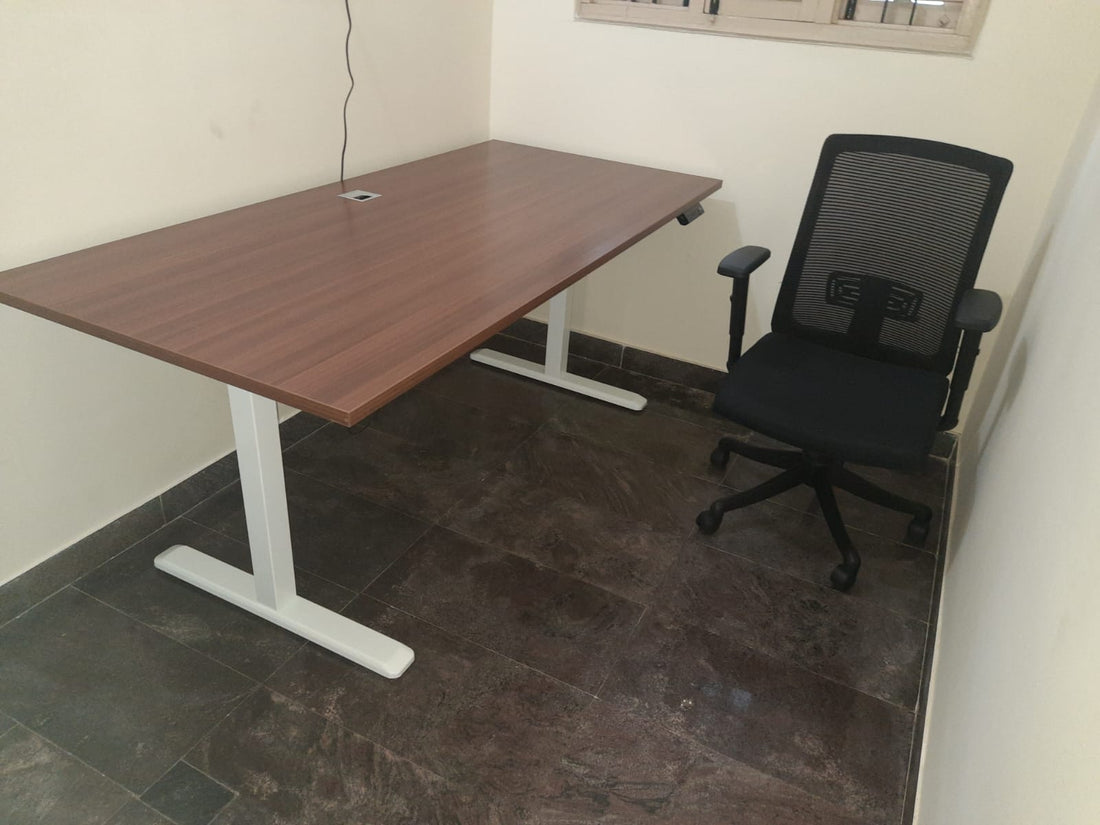
Are height adjustable desks better than traditional desk
In today's modern workplace, the debate between height-adjustable desks and traditional desks is gaining traction, particularly as sedentary lifestyles become more prevalent. Each option comes with its own set of advantages, making the decision complex. Factors like individual preferences, job requirements, and health considerations will ultimately determine the most suitable option. To help you navigate this decision effectively, we will explore the distinctions between height-adjustable desks and conventional desks in this article.
Height Adjustable Desks:
Sit-stand workstations, also known as height-adjustable desks, offer users the flexibility to change their work posture throughout the day. These desks typically come equipped with either a manual or motorized mechanism that enables users to adjust the desk's height, allowing them to alternate between sitting and standing positions as needed.
Advantages
Improved Ergonomics
Height-adjustable workstations offer enhanced ergonomics, promoting better posture and reducing the risk of musculoskeletal issues such as neck strain and back discomfort. By enabling users to easily switch between sitting and standing positions, these workstations encourage healthier work habits.
Boosted Productivity
Studies suggest that alternating between standing and sitting during work can enhance cognitive function and productivity.Incorporating regular standing breaks into your routine can help fight tiredness, boost alertness, and enhance productivity and concentration.
Advantages for Health
It's recommended to stay active throughout the day, and one way to achieve this is by using a desk that can be adjusted for height. This practice can reduce the likelihood of obesity, improve blood circulation, and lower the risk of developing chronic conditions associated with prolonged sitting.
Customizable
Desks equipped with height-adjustment features can be personalized to suit individual preferences and ergonomic needs. Users can easily modify the desk's height to find the most comfortable and efficient working position tailored to their specific requirements.
Traditional Desks:
For decades, conventional workstations featuring fixed heights and configurations have been commonplace in numerous office settings. These desks cater to a diverse range of tasks and are available in various designs, including corner, L-shaped, and rectangular configurations.
Advantages:
Cost-effectiveness
Conventional desks are often more budget-friendly compared to height-adjustable desks, making them a practical choice for individuals and businesses with limited funds.
Familiarity
Many people are accustomed to working at conventional desks, given their long-standing presence in office environments. Transitioning to a conventional desk requires no learning curve, allowing users to start working immediately without adjusting desk height.
Conclusion:
Choosing between standard workstations and height-adjustable desks isn't a one-size-fits-all decision. The right choice depends on individual preferences, budget constraints, and workspace requirements.
Height-adjustable desks are favored by those who prioritize health benefits, improved productivity, and ergonomic support. Many people find that the long-term advantages of these desks outweigh the initial investment.
For those seeking familiarity, stability, and affordability, traditional workstations remain a viable choice. By incorporating suitable ergonomic tools and practicing mindful sitting habits, individuals can mitigate some of the risks associated with prolonged sitting at conventional workstations.
